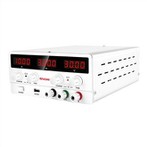Several test methods for digital anemometers
Digital anemometers are used to test the average wind speed and the turbulence component (wind turbulence from 1 to 150 KHz, which is different from the variation). Measurement of the average wind speed can be performed by thermal, ultrasonic, impeller, or skin and tube methods.
This method measures the resistance change of the sensor when it cools down due to the wind when it is energized, and thus measures the wind speed. Wind direction information cannot be obtained. In addition to being easy to carry and convenient, it has a high cost/performance ratio, and has been widely adopted as a standard product for anemometers. Thermal anemometers use platinum wires, thermocouples, and semiconductors, but we use platinum coiled wires. Platinum wire is a materially stable material. Therefore, it has advantages in long-term stability, as well as in temperature compensation.
The wind direction sensor of the photoelectric anemometer adopts a wind vane with low inertia and light metal to respond to the wind direction and drive the coaxial code disk to rotate, which is encoded in Gray code and scanned with photoelectricity to output an electric signal corresponding to the wind direction.
Photoelectric type wind speed sensor adopts low inertia wind cup, rotating with the wind, driving the coaxial cut-off disk rotation, with photoelectronic scanning output pulse string, output corresponding to the number of revolutions of the pulse frequency corresponding to the value, easy to collect and process. High strength, good starting, in line with national meteorological measurement standards;
The wind direction sensor has a built-in electronic compass, which automatically locates the direction angle, so that it can be installed in fixed places or in mobile places (such as special vehicles, ships, drilling platforms, etc.)
Rotating Wheel Probes for Anemometers
The working principle of the digital anemometer's rotating wheel probe is based on the conversion of the rotation into an electrical signal, which first passes through a proximity inductor, "counts" the rotation of the rotating wheel and generates a series of pulses, which are then converted and processed by the detector to obtain the rotational speed value. The large diameter probes (60mm, 100mm) of the anemometers are suitable for measuring turbulent flows with small or medium velocity (e.g. at the outlet of pipelines). The small diameter probes of the anemometers are more suitable for measuring airflow in ducts with a cross-section greater than 100 times the cross-sectional area of the probe.
Positioning of the digital anemometer in the air stream
The correct adjustment position of the anemometer's rotating probe is with the airflow direction parallel to the rotor axis. When the probe is gently rotated in the air stream, the indicated value will change. When the reading reaches its maximum value, the probe is in the correct measuring position. When measuring in the pipe, the distance from the starting point of the straight part of the pipe to the measurement point should be greater than 0XD, turbulence on the anemometer's thermal probe and the Pitot tube has relatively little effect.
Digital anemometer in the pipe air flow measurement
It has been proved that the 16mm probe of the anemometer is the most widely used. Its size ensures good permeability and can withstand flow velocities up to 60 m/s. The measurement of air flow velocity in ducts is one of the feasible measurement methods, and the indirect measurement protocol (grid measurement method) is applicable to air measurement.






